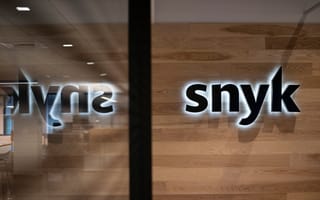Creating a product without engineering design is kind of like building a piece of IKEA furniture without its set of instructions.
In other words, it would be a practically insurmountable feat. Engineering design could be seen as the blueprint that brings a product’s purpose to life, guiding engineers through the steps that need to be taken to ensure the solution tackles the issue it was created to solve.
Given the importance of engineering design in product development, many teams find ways to get the most out of the process — and that’s where AI comes into play. AI has been a game-changer in this respect, giving engineering teams more time to maximize a product’s potential.
At Snyk, Director of Product Design Ranjan Bhattarai and his teammates leverage AI to optimize their workflows, evaluate ideas and more. He said the company encourages experimentation while maintaining appropriate governance, ensuring its technologists use AI both effectively and securely.
Fostering a focus on safety is important, Bhattarai noted, especially considering AI comes with its own unique set of challenges. This includes the possibility of AI hallucinations, which can lead to inaccurate conclusions about user needs.
But these challenges pale in comparison to the benefits AI offers Bhattarai’s team. He shared that, with proper measures in place, he and his peers have witnessed their workflows improve significantly, giving way to a promising future.
“I am optimistic about how AI will continue to help us design and deliver user-centered products more quickly,” Bhattarai said.
Read on to see what else Bhattarai had to say about how his team responsibly leverages AI in engineering design, the challenges they’ve overcome along the way and what excites him most about Snyk’s continued use of AI.
Powered by “human-in-the-loop” AI, Snyk’s platform helps engineering teams find, prioritize and resolve security vulnerabilities in code, containers, cloud infrastructure and other domains. The company’s products perform a broad range of security tasks, from mitigating supply chain risk to safeguarding AI-generated code.
How does your team use AI in the engineering design process, and what benefits have you observed? How does Snyk support and encourage you to use AI safely?
My team works with our product management and engineering teams to design new features, improve existing ones and write technical documentation for Snyk products.
Snyk encourages the safe and effective use of AI. We have a dedicated AI governance team that guides us on risks and opportunities. We use AI to make our workflows faster and more efficient. During brainstorming sessions, AI helps us organize and evaluate ideas. It also acts as a creative partner during ideation, suggesting alternative solutions that keep us focused on customer needs.
On the documentation side, we are piloting AI to generate the first draft. We want to better understand if we can accelerate creation of high-quality and accurate documentation of all Snyk product features.
Finally, we’re using it for some of the most impactful solutions, such as fixing security.
Snyk’s balanced approach to AI, which encourages engagement and experimentation with the technology while maintaining appropriate governance and education, is key to its continued adoption in the company.
“Snyk’s balanced approach to AI, which encourages engagement and experimentation with the technology while maintaining appropriate governance and education, is key to its continued adoption in the company.”
What challenges have you encountered when implementing AI technologies in engineering design, and how have you addressed these issues?
Like any new technology, AI brings excitement and uncertainty. On my team, there are varying levels of fluency with AI tools. Externally, the hype around AI often exaggerates what it can achieve.
One challenge we faced was identifying meaningful use cases and trusting AI-generated results. For example, AI can hallucinate, leading to inaccurate conclusions about user needs. To address this, we leveraged our internal large language model for insights on select interview data that had already been manually analyzed. The LLM captured broad themes accurately but fabricated some customer quotes. To fix this, we refined the prompts and now use the LLM only for identifying high-level themes. Qualified team members still review and validate all insights.
Another challenge was using AI for design solutions. While generative AI can produce numerous iterations from a single prompt, it often misses the mark on creating specific, usable designs. For example, I couldn’t arrive at the intended design idea solely through AI prompts. We’ve learned that AI works best for freeform brainstorming, but designers still refine these ideas into solutions that align with the product’s look and behavior. AI is a valuable tool, but human expertise remains essential to ensure quality and alignment.
What excites you most about your team’s future when it comes to leveraging AI in innovative ways?
AI’s ability to retain context and process vast data across domains allows us to make faster, more informed decisions. As the technology evolves, I see it enabling a more human-centric and efficient way to interact with systems. For instance, instead of writing complex queries to understand security vulnerabilities, customers could simply use prompts to get faster, more precise results.
AI will transform our internal workflows. It can detect bottlenecks early on and optimize team processes. It can ensure that design and technical documentation is accurate, high-quality and compliant with organizational standards. By flagging potential communication gaps or problems early on, AI will help us address challenges proactively.
With proper governance, AI can enhance efficiency while safeguarding against risks. I see AI as a partner, not a replacement, for our teams. I am excited to see how empowered teams will leverage AI responsibly to accelerate innovation at Snyk and across the industry.







